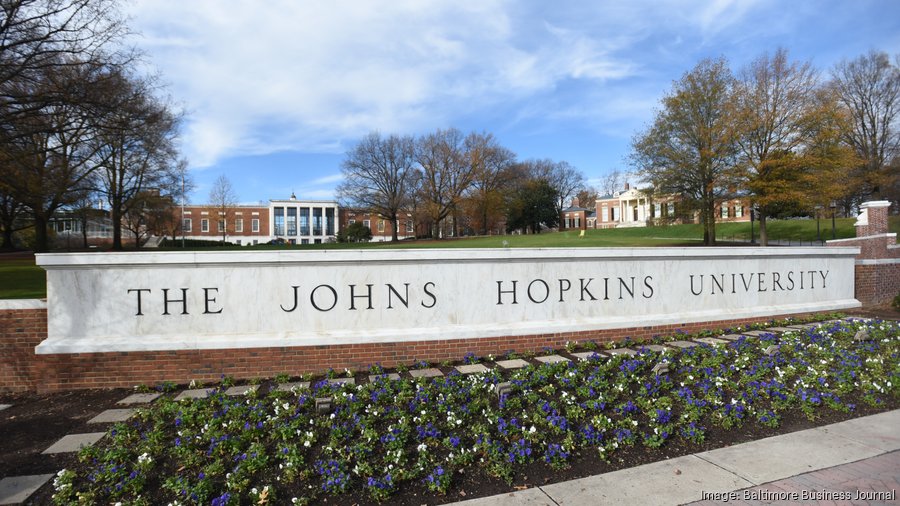By Ellie Wolfe
When Hal Daume started studying artificial intelligence 25 years ago, it was “this weird little academic subdiscipline that no one had heard of.”
But now it appears that higher education, and the world, may finally be taking notice. Daume, a computer science professor at the University of Maryland, now serves as the inaugural director of the new Artificial Intelligence Interdisciplinary Institute at Maryland, which launched May 2024.
That means the questions Daume has spent most of his academic career asking are finally being addressed in academia.
The state’s flagship university isn’t alone in trying to answer that question. Colleges and universities across Maryland are racing to embrace AI in the classroom and beyond, making large investments in the field and recruiting experts from around the country to staff their programs. They’re also investing time in studying the impact, and potential downsides, of artificial intelligence usage. And though Daume says skeptics of AI are “right to be nervous,” he’s also excited about the advancements that universities are making in the field.
“AI is likely to change the way we do absolutely everything,” said Gillian Hadfield, an economist and former law professor who was recruited to join Johns Hopkins’ AI institute last year. “It’s inventing the capacity for a machine to do what the human brain can do, and that’s what all the companies are racing the build.”
She’s “really delighted” to see the investment from higher education into AI.
“We need many, many more people in our kind of research communities … helping guide this transformation because right now it’s happening all inside private technology companies,” said Hadfield, who has done AI-related work since 2016 and had a contract with OpenAI, maker of ChatGPT. “I think that’s actually a first in human history where we haven’t had universities playing the central role in developing new technologies and making these leaps.”
At Johns Hopkins, Hadfield said, the number of students graduating with computer science degrees is “exploding.” But what got her most excited about moving to Baltimore and joining the university were the “major, major investments” being made in AI in other departments, including economics, sociology, policy and law, and philosophy.
“You don’t have to be able to code, you don’t have to be able to build it, but understanding what’s going on under the hood is critical so that all of us can be participating in the discussion of what impact this is having on our society,” she said.
That holistic, interdisciplinary approach is also evident at UMD. Just last month, university President Darryll Pines told faculty that “AI is one of those technologies that’s going to be infused, literally, in every discipline.”
UMD and its philanthropic and industry partners are investing more than $100 million into its institute over the next 10 years and hiring 40 faculty members in fields across the university to support the program.
Humanities professors at the university are using AI in lots of ways, including, for example, to make it easier to read documents from centuries ago.
There is also a push to help students enter the workforce with more skills.
“I think our responsibility as a university is to prepare students for the world,” Daume said. “How do we train students to be ready for a workforce where AI is a part of it?”
That’s a question on the mind of Kofi Nyarko, director of Morgan State University’s Center for Equitable AI and Machine Learning Systems, which has a narrower focus on developing standards that keep AI fair and unbiased.
“We want to make sure that as this technology is evolving, our students are prepared to steer it in the right way,” Nyarko said. “It’s really important for universities to help prepare not only the next workforce, which needs to be very AI-literate, but also to know how to leverage the technology.”
Universities like Morgan State can push back against industry and corporations using AI in “biased” ways, Nyarko said. “Traditionally speaking, in the machine learning industry, there has been underrepresentation of certain minority groups.”
That means, he continued, that Morgan State, a historically Black college, has an especially important role to play in AI education.
Goucher College is also focused more closely on the ethics of AI in higher education. The small liberal arts college began thinking about AI usage after students used the technology to help draft essays. Now, Goucher tries to find creative ways to implement and teach AI in its writing center and classrooms.
“It’s not a one-size-fits-all model for us. We really have a spectrum,” said Lana Oweidat, the director of the writing center at Goucher. “You have professors who feel strongly about not allowing students to use AI-generated text or AI tools in the classrooms or in their assignments, and then you have faculty who embrace AI and spend some time teaching students how to use it ethically.”
Instead of having their own AI center, Goucher focuses more on teaching students to analyze AI responses as liberal arts students.
“AI tools are not neutral tools; they’re tools that give us information but there is an embedded bias in the text,” Oweidat said. “We work to analyze this rhetorically and analytically and see how the tool can actually provide or make those kinds of mistakes.”
That, according to Oweidat, is one of the most important things she teaches her students.
“This is not a tool that you can label as good or bad,” she said. “It is a tool that you need to use ethically and responsibly.”

